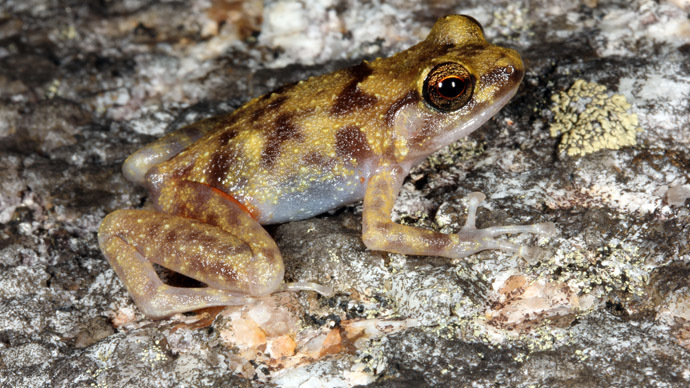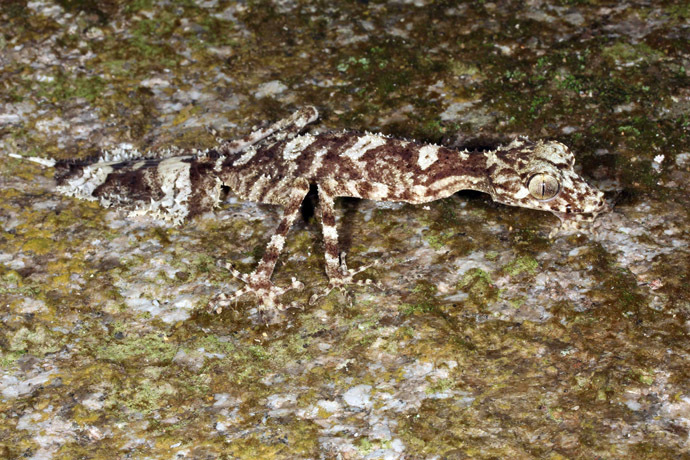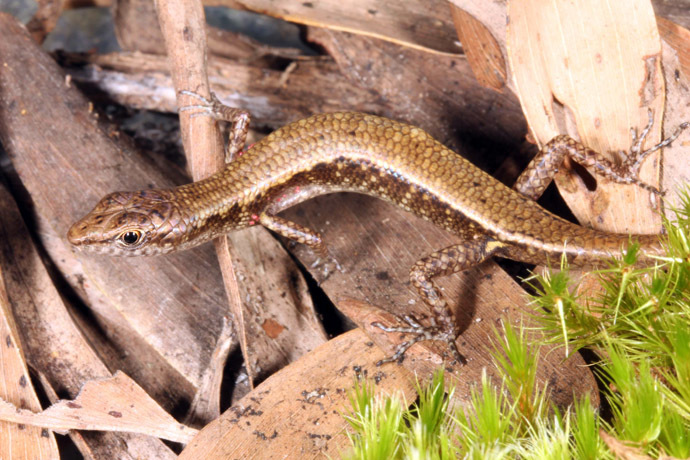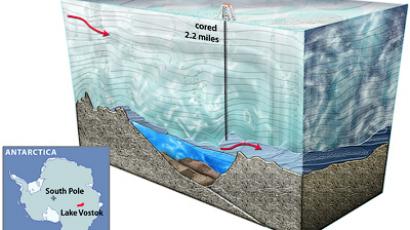Australia's 'lost world' dazzles with new species

A remote mountain range in northern Australia just gave the world three new species after sitting in isolation for millions of years – including a ‘primitive-looking’ gecko. The scientists are excited for a return, hopeful of uncovering more new species.
We now know of a peculiar leaf-tailed gecko, a golden skink
lizard and a brown-spotted yellow frog – none of them previously
seen.
The expedition carried out by Conrad Hoskin from James Cook
University and a film crew from National Geographic was to a
difficult-to-reach and previously unexplored part of the Cape
York Peninsula, which previously had only been subjected to
lowland studies of impassable boulder fields.
The area is covered with tons of giant black granite boulders extending vertically for hundreds of meters and the result of nature’s furious prehistoric natural processes. But atop the mountain range, recently captured by satellites, sits a rainforest previously only explored by satellites.
Mere days upon arrival, Hoskin and his crew stumbled upon not one
– but three new species at the same time. "The top of Cape
Melville is a lost world. Finding these new species up there is
the discovery of a lifetime -- I'm still amazed and buzzing from
it," Hoskin, a tropical biologist by trade, told AFP.
"Finding three new, obviously distinct vertebrates would be surprising enough in somewhere poorly explored like New Guinea, let alone in Australia, a country we think we've explored pretty well," he continued, adding that a few other interesting things were uncovered that may be new to science – but declined to comment further.

Of the three new species the gecko fascinated the team the most. It was described as a “primitive-looking”, 20cm creature that is a nod to an era when rainforests were far more widespread in Australia. The pre-historic reptile also has huge eyes, with a long slender body, but all in all a very different animal to its relatives.
"The second I saw the gecko I knew it was a new species. Everything about it was obviously distinct," he said.
The newfound Leaf-tailed Gecko names Saltuarius eximius by Hoskin as the findings were publicized in the international journal Zootoxa.
As far as differences with close relatives go, the skink is also very notable, as it displays very distinct characteristics from its geographical neighbor in the rainforests to the south.
The newly-discovered frog is creative in its use of the surrounding terrain. Because frogs require water for eggs to develop, the frog leaves them in between the moist areas of the giant boulders, far from ideal – but it works: in the absence of water, the tadpole develops fully within the egg, before hatching.

Also on the research team was a National Geographic photographer and Harvard University researcher Tim Laman, who relayed his amazement at how such discoveries are still taking place.
"What's really exciting about this expedition is that in a place like Australia, which people think is fairly well explored, there are still places like Cape Melville where there are all these species to discover," Laman said, adding that “there’s still a big world out there to explore.”
The team is happy at the prospect of discovering even more new species as they plan to return in a matter of months. They mentioned the possibility of new species of snails, spiders and, surprisingly enough – small mammals.
"All the animals from Cape Melville are incredible just for their ability to persist for millions of years in the same area and not go extinct. It's just mind-blowing," Hoskin concluded.














